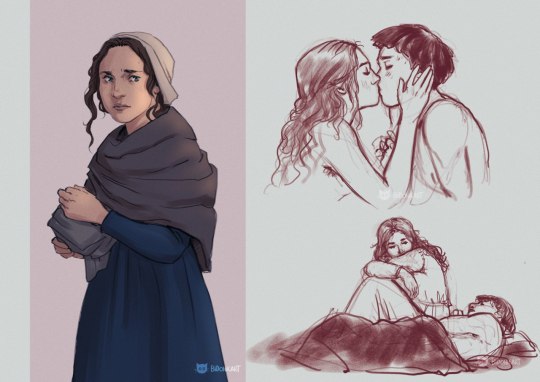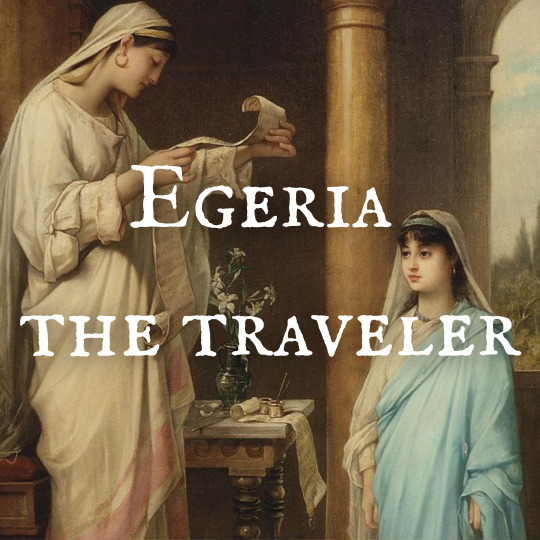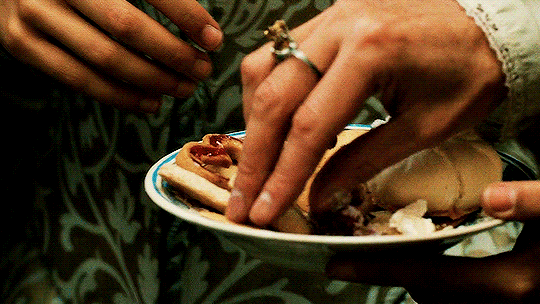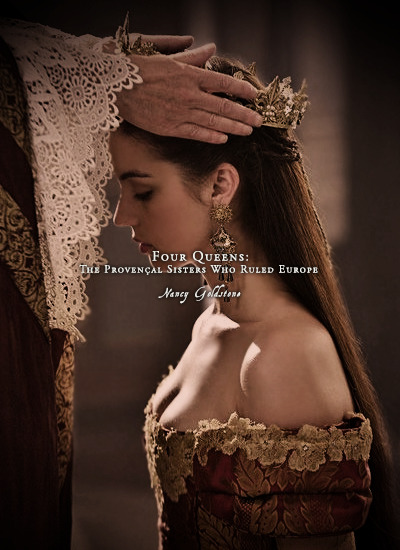thewritingpossum
7K posts
Don't wanna be here? Send us removal request.
Text
youtube
Isabella of France between 1327 and 1330
#in all fairness 'tyranny' would probably work better than 'corruption' for that particular joke#but it's still true enough to be funny to me idc idc#anyway you know i love isabella but it's always so funny when i see her presentated as seizing the power to free the people from tyranny#like girl where lmaoooo???#isabella of france#Youtube
2 notes
·
View notes
Text
Everyone should be grateful Alicent has the self control to only be responsible for a war that’ll cost the lives of thousands bc picture having to deal with Viserys all the goddamn time. Every morning he makes you comb out his wig and every night he wakes you up at 4am to say some shit like back in my day ice cream cost half a nickel and we called it a sweet frosty boner but you wouldn’t remember that eh sport? And all you ask him for is a ride to the emergency room bc one of your upsettingly blond children got mauled again and nobody will let you learn how to drive and he says he can’t pause his roblox game bc it’s a live event and can’t you just put some vapor rub in it Aemma? I’m killing us all right now. Say one more fucking thing about your warhammer table set and I’m hopping the wall and personally letting the others through
#reblogging this in honor of seeing even more people blaming alicent for everything wrong with aegon#because everyone knows that all the decisions and actions of grown men are the fault of a woman! most likely their mean mommy!#and i'm just sitting there like she should have been worst#she should have cannibalized her sons like a mother hamster will do in time of great stress idc idc#also the upsettingly blond children get me everytime#i saw two little very blond boy at the grocery store the other day and all i could thing about was this post#asoiaf
895 notes
·
View notes
Photo

“Behold, thou art fair, my love; behold, thou art fair. Thy hair is as a flock of goats that lie along the side of Mount Gilead; thy lips are like a thread of scarlet, thy temples are like a piece of a pomegranate, thy neck is like the tower of David whereon there hang a thousand bucklers.” And I asked myself, frightened and rapt, who was she who rose before me like the dawn, beautiful as the moon, radiant as the sun, terribilis ut castorum acies ordinata.
The Name of the Rose, Third day, after compline: In which Ubertino tells Adso the story of Fra Dolcino, after which Adso recalls other stories or reads them on his own in the library, and then he has an encounter with a maiden, beautiful and terrible as an army arrayed for battle.
After I learned about the upcoming graphic novel I had to put down my foot and post how I envision the unnamed village girl… the night filter makes her hair look dark brown but it actually veers towards auburn (that’s how I interpreted the “her hair like purple” line)
where else to find me
#my precious baby girl :'(#i 100% share op's headcanons#we didn't see her dying and therefore she didn't idc idc#also i burst out laughing when my boy adso started with the song of songs#this is just such a classic horny catholic thing to do lmao#the name of the rose#art
149 notes
·
View notes
Text


i literally only use ibis paint on my phone to draw stupid shit like this now
#'I'm an ally till yall get annoying' is THE most isabella of france meme in the whole world lmao#edward ii#isabella of france
17 notes
·
View notes
Text

Writer and traveler, Egeria toured Christianity’s most sacred sites during the late 4th century. Her account offers a unique and historically significant testimony.
The mysterious Egeria
Egeria and her writings fell into obscurity until a fragment of her Itinerarium was rediscovered in 1884. At the time, the author’s name was unknown, leading to much speculation. However, based on other texts and fragments, scholars eventually identified the writer as a certain Egeria (although variations of her name exist).
She likely undertook her journey between 381 and 384 and may have been from Galicia, which would make her the first known writer from the Iberian Peninsula.
Egeria was almost certainly a nun. While some argued that a monastic woman could not have left her order for such a long time, a wealth of evidence suggests otherwise. For one, she addressed her readers as “sisters,” likely referring to members of her religious community. During her travels, she attended services held for monks and consecrated virgins. Furthermore, the 7th-century Spanish monk Valerius referred to her as “a blessed nun.” He clearly saw no contradiction between her monastic status and her activities.
Egeria was perhaps a woman of high social standing. She had the resources to undertake such an extensive journey independently, seemingly unconcerned by its cost or duration. She was warmly welcomed by local clergy, especially bishops, and provided with guides and an armed escort.
However, some elements challenge this view. Egeria traveled without an entourage and often journeyed on foot or by mule. Whether she was wealthy or not, one thing is clear: Egeria possessed a remarkable adventurous spirit.
Egeria’s journey
Geographically, Egeria’s pilgrimage spanned a vast area, including Palestine, Egypt, Syria, Mesopotamia, and Asia Minor. Her journey began in Constantinople, and the preserved portion of her Itinerarium opens with her approach to Mount Sinai. She then traveled to Egypt, following the route of the Exodus, before returning to Jerusalem.
Her choices and flexible itinerary reveal a strong sense of independence. Egeria expressed genuine excitement at her discoveries, showing particular curiosity about the liturgical practices of the religious communities she encountered.
At the shrine of Saint Thecla, she met with a deaconess named Marthana—an earlier acquaintance—who appeared to be one of the shrine’s guardians. Saint Thecla, a prominent female figure in early Christianity, was known for teaching, healing, and baptizing.
"On the third day I arrived at a city that is called Seleucia in Isauria. When I had arrived there, I went to the bishop, truly holy from the time he was a monk; I also saw a very beautiful church there in that city. And as from there to holy Thecla, which place is outside the city on a hill, but flat, is about fifteen hundred paces from the city, so I preferred to go there to make the stay there that I was going to make. But there is nothing else there at the holy church except innumerable monastic cells of men and of women. For I found there someone very dear to me, and to whose way of life everyone in the east bore witness, a holy deaconess by the name of Marthana, whom I had known at Jerusalem, where she had gone up for the sake of prayer; she was governing cells of apotactitae* or virgins. When she had seen me, surely I cannot write down what her joy and mine could have been?"
This encounter illustrates the existence of networks among female religious travelers. Indeed, Egeria was not unique in this respect. Many women visited holy sites, sought out revered individuals, and some later founded their own monasteries.
According to Valerius, once her pilgrimage was complete, Egeria returned home and became an abbess.
Though her account was originally intended for personal use, it holds tremendous historical value. It is unique among pilgrimage narratives—not only describing sacred places but also capturing personal experiences. It also serves as a valuable source of insight into early Christian practices and the spiritual geography of the time.
If you enjoy this blog, consider supporting me on Ko-fi!
Further reading:
Berger Teresa, Women's Ways of Worship, Gender Analysis and Liturgical History
Dietz Maribel, Wandering Monks, Virgins, and Pilgrims
Egeria, Journey to the Holy Land
“Egeria, Pilgrim, Traveler and Writer of the 4th century”
Plant Ian Michael, Women Writers of Ancient Greece and Rome : An Anthology
#i translated one of her text for my medieval latin class and I've loved her ever since#egeria the traveler#women in history
90 notes
·
View notes
Text














medieval beds & sheets
collection of 15th c. manuscript illustrations
sources/links: Chantilly, Bibl. et Archives du Château, Ms. 388, fol. 8v // Paris, BnF, Français 96, fol. 17r // Paris, Bibl. Mazarine, Ms. 955, fol. 10v // Munich, BSB, Cgm 503, fol. 36v // Paris, BnF, Français 112 (1), fol. 244v // Frankfurt, UB, Ms. germ. qu. 12, fol. 50r // Paris, BnF, Français 119, fol. 398v // Karlsruhe, BLB, Cod. Donaueschingen 145, fol. 91r // Berlin, SBB, Ms. germ. fol. 1, fol. 86v // Munich, BSB, Cgm 8010a, fol. 22r // Genève, Bibl. de Genève, Ms. fr. 165, fol. 7r // St. Gallen, Kantonsbibl., VadSlg Ms. 343c, fol. 27r // Paris, BnF, Ms-5070 réserve, fol. 12v // Los Angeles, Getty Museum, Ms. 33, fol. 210r
3K notes
·
View notes
Text
I cannot get this fucking scene quite the way that I want

#what i need to do is to just finish a complete first draft instead of finicking on particular parts of it#especially since it's one of the first scene of this thing that I wrote and I'm lowkey sick of it which doesn't help anything#also this is litterally just a fanfic that 10 people max will read it's so not that deep lmao#but eh i'm back in the writing mood and it is something
2 notes
·
View notes
Text
Going out to write at the park is all fun and game until you realize that the picnic table you're sitting at is infested with red mites
#they're harmless and not particularly scary but there were just too many of them smh#i did helped me get back in the writing mood tho :)#maybe tomorrow before work i'll try to go to another park and hope that there's a little less bugs
1 note
·
View note
Text
whenever you take too much time to write something know it is because stephen king has been stealing your life force
#yeah i'll integrate that to my belief system#i'm not lazy stephen king is just stealing my life force
23K notes
·
View notes
Text

Pov: the name of the rose
733 notes
·
View notes
Text



for @leonordeborgona <3333
23 notes
·
View notes
Text






LA REINE MARGOT 1994, dir. Patrice Chéreau
2K notes
·
View notes
Text

#sure i'll incorporate that to my belief system#also this blog is truly something else#it's like 10% normal opinions 10% hilarious things like this 20% horniness and 60% the most insane shit you ever read#often with some extra insults added in for no reason#and that's not me talking shit i genuinely find it fascinating lmao
170 notes
·
View notes
Text

“There were terrible massacres, but in the end the rebels were forced to surrender, Dolcino and his people were captured, and they rightly ended up on the pyre.” “The beautiful Margaret, too?” Ubertino looked at me, “So you remembered she was beautiful?”
The Name of the Rose, Third Day, After Compline -- In which Ubertino tells Adso the story of Fra Dolcino, after which Adso recalls other stories or reads them on his own in the library, and then he has an encounter with a maiden, beautiful and terrible as an army arrayed for battle.
(where else to find me)
#'if it feels like they're giving you a 'we noticed you from across the bar' kind of look. it's intentional'#stop lmao#that's too much temptation for my poor boy adso with all of his teenage hormones and catholic repression#seriously tho i am obsessed with all of those character designs#everything about this is just so good#the name of the rose
434 notes
·
View notes
Photo






Favorite History Books || Four Queens: The Provençal Sisters Who Ruled Europe by Nancy Goldstone ★★★☆☆
Marguerite, Eleanor, Sanchia, and Beatrice, as daughters of the count and countess of Provence, were steeped in the culture of the troubadours. It played as important a role in their upbringing as their lineage—indeed, it was their lineage. Their father, Raymond Berenger V, came from a long line of poets. His grandfather, Alfonso II, king of Aragon, was a highly respected troubadour whose verses were praised by Peire Vidal, the greatest poet of his day. Raymond Berenger V inherited his grandfather’s talent and passion for literature, and embraced the troubadour culture. He wrote verses and his castle was always open to visiting poets and minstrels. His was a very literary court.
… Despite the troubadours’ influence, by all accounts, the sisters’ mother, Beatrice of Savoy, countess of Provence, was very happy with her husband. Beatrice had married Raymond Berenger V in 1219, when he was fourteen and she twelve. Raymond Berenger V was the first count of Provence to actually live in Provence in more than a century—all his predecessors had preferred to stay in Aragon. During the summer months, when the weather was fine, he and Beatrice traveled around the county, meeting the barons and accepting their homage. The count was young and strong and athletic: he climbed the long eastern side of the Alps and visited villages unknown to his ancestors. In the winter months, he and Beatrice held court at their castle in Aix-en-Provence, or sometimes went south to Brignoles, which he had given to Beatrice as a wedding present.
Beatrice gave birth to twin sons in 1220, but they did not survive. Marguerite was born in 1221, when Beatrice was just fifteen years old. Eleanor came in 1223, followed by Sanchia in 1228, and finally the baby, Beatrice—four girls in ten years. The children inherited their mother’s loveliness. The renowned thirteenth century English chronicler Matthew Paris, an eyewitness with no great love of foreigners, called Beatrice of Savoy “a woman of remarkable beauty.” But she was also intelligent and capable. One of ten children, eight of whom were boys, Beatrice had learned at an early age to value strength and power. From her father, Thomas, a bellicose, domineering man who was happiest when making war on his neighbors, she had inherited a family ethos of solidarity at all cost. Thomas had ruled his large, unwieldy brood unconditionally and with an iron will. From their first breaths, Beatrice and all of her siblings had been taught to think first of the family’s ambitions, and these were many.
… During this period, Marguerite and Eleanor, only two years apart, were each other’s constant companion (Sanchia and Beatrice were too young to be interesting as playmates). Marguerite’s temperament resembled her mother’s. She was patient, capable, intelligent, and responsible, with a rigid and highly developed sense of fairness. Eleanor was more mercurial. As is often the case with second children, she both admired and competed with her accomplished older sister. The differences in their personalities were complementary, and the bonds these two established while growing up in Provence would survive into adulthood. Marguerite and Eleanor were always much closer to each other than they were to either Sanchia or Beatrice.
… Raymond Berenger V and his family were very much a part of this culture of studied affluence. They entertained often and lavishly. “Count Raymond was a lord of gentle lineage…a wise and courteous lord was he, and of noble state and virtuous, and in his time did honorable deeds, and to this court came all gentle persons of Provence and of France and of Catalonia, by reason of his courtesy and noble estate,” wrote the medieval chronicler Giovanni Villani. Among his many visitors were his wife’s brothers. The count kept a large retinue and rewarded his entourage with gifts of money and clothes. His daughters were dressed in gowns of rich red cloth, the sleeves long and tightly laced to their arms. Over this they might wear a jacket of green silk. White gloves protected their hands from the sun. Even as children, they had their hair, which they wore down around their shoulders (only married women put up their hair), dressed in jeweled combs.
#already reblogged this thing when i was reading it the first time#and op i want you to know that your face claims for eleanor and sanchia hit so hard that i litterally cannot imagine them differently atp#that's just the mental image i get in my head when i think about them#so congrats lol
108 notes
·
View notes
Text
When you reread a non-fiction book about history with more knowledge on the topic and realize that you don't enjoy it as much

#this is about four queens by nancy goldstone btw lol#i'm currently in the middle of a reread and while i still think it's a good book with a lot of interesting informations..#i certainly picked up on more flaws than the first time i read it#i'm especially weirded out by how much she push the idea of jean de joinville and margaret of provence having an affair#yeah i'm sure the queen and one of the king's closest advisor could have had a full blown affair in military camp without getting caught#also some of the things she wrote about the mumluk were not necessarily wrong per say but not fully accurate either#and and my pettiest complaint is that she claims that the name Jean Tristan comes from the fact that the character Tristan..#has such a tragic ending#it comes from the fact that they were both born of their mother tears! it's even more poignant and interesting! like come on now!#anyway there could be so much worst examples of this particular phenomenon than this particular book but that's still my inspiration lol
6 notes
·
View notes
Text

E come l'angelo mi parlò Guglielmo [...] Diversamente dell'angelo Guglielmo piangeva
#this is so fucking good!!!!!#my boy adso cries and need to get comforted by his master so much in this story#sometimes for very serious and valid reasons and sometimes for silly ones#so it really hits when william turns out to be just as distraught and heartbroken by everything unfolding around them#it's not just a respectable master comforting his young student#it's two men who just witnessed a whole lot bs seeing even more destruction that they are entirely unable to stop all around them#and having absolutely no one else to rely upon in this moment#their relationship is truly everything to me istg#the name of the rose
147 notes
·
View notes